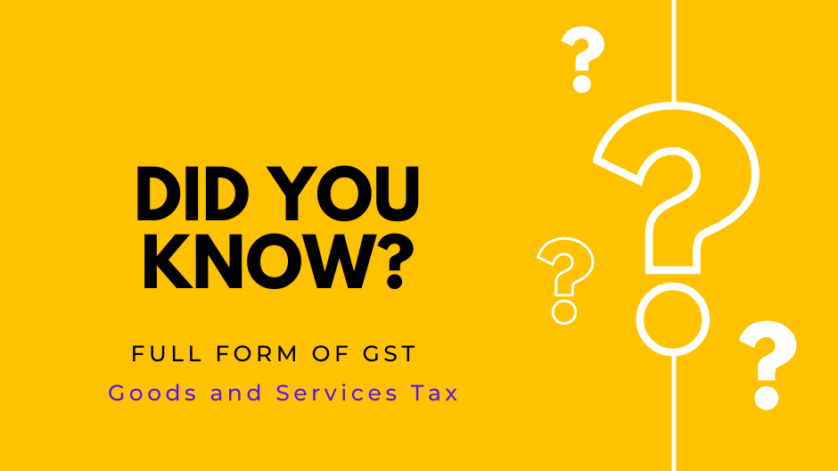GST Full Form
Goods and Services Tax (GST) is a comprehensive indirect tax that was implemented in India on July 1, 2017, replacing the earlier complex system of multiple indirect taxes levied by the central and state governments. GST is a destination-based tax, which means it is levied at the point of consumption rather than the point of origin.
The GST system in India is based on a dual model, where both the central and state governments levy and collect taxes simultaneously. The central government levies and collects taxes on the supply of goods and services across the country, known as Central GST (CGST), while the state governments levy and collect taxes on the supply of goods and services within the state, known as State GST (SGST). Additionally, an Integrated GST (IGST) is levied and collected by the central government on inter-state transactions of goods and services.
One of the primary aims of GST implementation was to simplify the tax structure and make it more transparent and efficient. The earlier tax system was riddled with cascading taxes, tax evasion, and complex compliance procedures, which led to an increase in prices of goods and services. With the implementation of GST, a unified tax structure was introduced, which simplified the tax regime and reduced the tax burden on the consumers. GST has also helped in increasing the tax base, as more businesses have come under the tax net due to the ease of compliance.
GST has also led to the reduction of prices of several goods and services, as the tax burden on businesses has reduced. It has also led to the creation of a level playing field for businesses, as the earlier tax system had differential tax rates for different states and industries, which led to a distorted competition scenario. With GST, there is a standardized tax rate across the country, which has created a uniform business environment.
Another significant advantage of GST is the integration of technology in the tax system. The GST system is entirely online, which has reduced the paperwork and manual intervention required for compliance. It has also made the tax system more transparent, as all transactions are recorded in the GSTN (Goods and Services Tax Network) portal, which can be accessed by the government authorities. The integration of technology has also led to the reduction of tax evasion, as all transactions are tracked, and it is difficult for businesses to hide their income.
However, the implementation of GST has also faced several challenges. The initial phase of GST implementation was marred by technical glitches and delays, which led to confusion and chaos among businesses. The frequent changes in the tax rates and compliance procedures have also been a challenge for businesses, as it requires frequent updates and changes in the software and systems. The GST system has also faced criticism for its complex compliance procedures, which have led to increased compliance costs for small businesses.
The implementation of GST has been a significant reform in the Indian tax system, which has simplified the tax regime and reduced the tax burden on consumers. It has also created a level playing field for businesses and integrated technology into the tax system. However, there is still scope for improvement in the GST system, especially in terms of simplifying the compliance procedures and reducing the compliance costs for small businesses.

